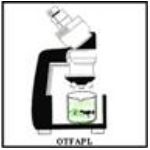AGLS 6502 Lecture 20.2 - The Javelina or Quenk: Feeding
20.2 What does the Quenck eat? Suggested Nutrient Requirements
True Nitrogen Digestibility (TND), a measure of the portion of the crude protein (CP), which is capable of being absorbed was 0.96 for adult peccaries (Carl and Brown, 1985). This digestion coefficient is higher than that for white-tailed deer (Odocoileus virginanus) fawns (0.84) and yearlings (0.89) consuming pelleted diets (Smith et al., 1975; Holter et al., 1979 in Carl and Brown, 1985). There was similarity to the combined value (0.94) for various white-tailed and mule deer (O. hemionus) fed alfalfa or various browse species (Robbins et al., 1974 in Carl and Brown, 1985). The value found in the peccaries studied was also higher than that found in Hampshire pigs - 0.76 (Carl and Brown citing Armstrong and Mitchell, 1955).
An apparent digestibility of 0.305 g N/kg0.75/day was obtained using pelleted commercial feed with increased apparent digestibility as dietary protein content increased (Carl and Brown, 1985). The ADN value obtained was determined to be intermediate to white-tailed deer (Carl and Brown, 1985 citing Robbins et al., 1974; Smith et al., 1975; Holter et al., 1979). In comparison to that of growing pigs, citing work by Armstrong and Mitchell (1955), Carl and Brown (1985) felt peccaries shared higher ADN values.
The maintenance nitrogen requirement was determined at 0.815 g N/kg0.75/day (6.8% daily CP intake) (Carl and Brown, 1985), but lower than the 10% value for pigs (Armstrong and Mitchell, 1955; Lassiter et al., 1956 in Carl and Brown, 1985).
The peccary’s protein maintenance requirement appears to more closely match the relatively low requirement of the deer which are true ruminants, than that of the pig (Carl and Brown, 1985). The possible implication is that in this instance, the peccary may have a digestive physiology more similar to that of ruminants than that of the domestic swine (Carl and Brown, 1985).
In their work on nutrition levels during pregnancy, Lochmiller et al. (1987) suggested a high quality diet of 16% CP and 3500 kcal digestible energy/kg. The mean consumption of dry matter obtained under experimental conditions in Texas was 451 g DM/day throughout gestation (Lochmiller et al., 1987), and this is about 9% Live Weight.
The diet of the peccary during gestation had little effect on the neonate’s weight 684 ± (SE) 23 g, or on the gestation interval of 143 - 147 days (Lochmiller et al., 1987). Poor nutrition (i.e. low energy and low protein) did affect the condition of the female whose body tissue stores were utilized to support the developing foetus (Lochmiller et al., 1987). The low protein and energy intakes were also reflected in the poor development of the foetal organs such as the brain, heart, pancreas and paired adrenal organ (Lochmiller et al., 1987).
Animals held in captivity as part of research programmes in Arizona, were maintained on hog pellets which contained 16% crude protein, 2% crude fat, and 6% crude fibre, and with free access to water, were found to breed readily (Sowls, 1984). In their work on nutrition levels during pregnancy, Lochmiller et al. (1987) citing Gallager (1981), suggested a high quality diet of 16% CP and 3500 kcal digestible energy/kg. Citing work by Gallager et al. (1984), Lochmiller et al. (1987) reported mean daily digestible energy and protein maintenance requirements for adult peccaries as 148 kcal/kg0.75 body weight and 523 g/kg 0.75 body weight respectively.
The suggested mineral and vitamin recommendations followed those of the NRC (1979) for swine as cited by Lochmiller et al. (1987). Carl and Brown (1985) in attempting to determine the energy maintenance requirements of the collared peccary found the digestible energy intake pre unit body weight to range between 75.8 - 132.6 kcal/kg/day, with no loss of weight. Zervanos and Hadley (1973) obtained a summer maintenance requirement of 72.2 kcal/kg/day , as cited by Carl and Brown (1985).
Helpful Links, Photos, Videos and Multimedia
